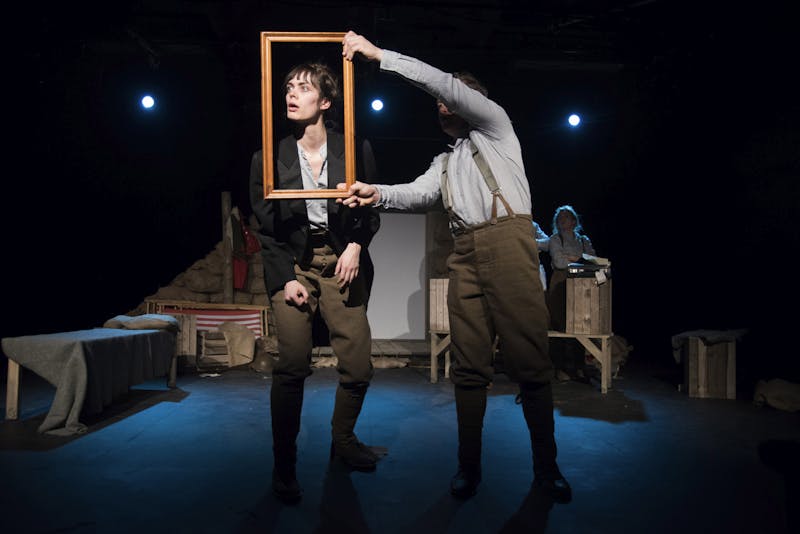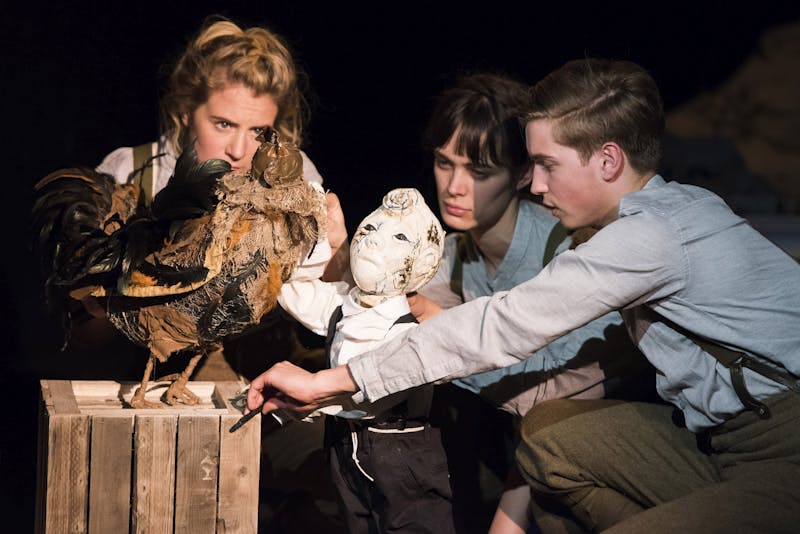“It’s a fort!” exclaims Bertie, opening his Easter present. Bertie’s brother Eric disagrees. “It’s the palace of the Mpret of Albania,” he says. “It’s got no windows, you see, so that passers-by can’t fire in at the Royal Family.” But no. “It’s a municipal dustbin,” says their uncle. “You see all the refuse and litter of a town is collected there, instead of lying about and injuring the health of the citizens.”
Bertie and Eric are not allowed to play with violent toys. But they have been learning about the reign of Louis XIV, and they have blood on the brain. Using a combination of imagination and history, the boys make do. They concoct and enact a savage assault on their Easter present—a new model of the Young Women’s Christian Association. The game ends with red ink splattered and a hundred imagined girls slaughtered, amid the ruins of a mother’s idealism.
So goes The Toys of Peace, one of the many short and delicious stories by Hector Hugh Munro, better known by his alias Saki. Although the toys are sadly not featured, a new play incorporates the fantastical viciousness of Saki’s fiction with his last days in the trenches of World War I. Katherine Rundell’s Life According to Saki is now on at New York’s Fourth Street Theater (the show runs through March 5) after a run at last summer’s Edinburgh Festival, where it won the Carol Tambor Best of Edinburgh Prize.

A cast of six (with standout performances from Phoebe Frances Brown and Ellen Francis) play all parts on a single set. They are dressed as soldiers, helmets and all. Saki welcomes the audience to the trenches, explaining how he joined up in his mid-forties despite being too old. All that is true. Then comes the fiction. Framed as stories told to liven up the deadening boredom of war, the six actors leap into a series of tales from Saki’s oeuvre. With only the most minor of costume changes and using minimal props, the cast dart in and out of identities and worlds fluidly and with total conviction.
The stories are a little Wilde-like—upper-class Edwardian jam and governesses—but even more like the gruesome tales of Hilaire Belloc or Roald Dahl. Mothers get trampled by cows (Saki’s own mother actually suffered this fate) and children chewed up by hyenas as often as ladies drink tea. The “civilized” world is really a very vicious place, these stories say, and a stupid one.
Saki was born in 1870 and died in the war. (“Put that bloody cigarette out!” were his famous last words before a sniper got him.) He was partially raised by strict relations. Hence the famous story Sredni Vashtar. In it, a dour aunt terrorizes her charge (played in Life According to Saki by a gorgeous puppet). The boy dotes on a ferret kept in the garden shed. In time, the doting becomes worship; the ferret becomes a god before whom the little boy dances. Will Sredni Vashtar the ferret-god take his revenge upon the aunt, or is he just a rodent? Saki himself tried to adopt a rageful tiger cub during his short stint in Burma, but it did not work out.

Other animals stalk Saki’s body of work and this production. Howling wolves and gnashing hyenas and elephants and malevolent chickens slink onstage whenever Saki wants a shot of surrealism (before Surrealism) and romance and humor—what we used to call the absurd. In her playwright’s note, Rundell observes that Saki’s gayness may well be sublimated into these scenes. “It’s possible that the necessity for relentless secrecy in his romantic life made it natural for him to write obliquely, to use tigers and wolves to talk about sex and death.”
Rundell also notes that we’re not totally sure why Saki called himself that. There is a monkey called a Saki, a truly idiotic-looking monkey. But also there is a character in the 12th-century Persian classic, the Rubáiyát of Omar Khayyam with that name. She quotes some lines from an early English translation:
And fear not lest Existence closing your
Account, and mine, should know the like no more;
The Eternal Saki from that Bowl has pour’d
Millions of Bubbles like us, and will pour.
Saki is like this cupbearer. His stories flock together like bubbles (he published them separately in newspapers, then collected in books), little and joyful and abundant.
The only irritating aspect of this production is innate to its subject matter, and may not affect American viewers. Nostalgia for the British past has got a little gross in recent years, with the Queen’s jubilee being the most prominent example. Moustachioed poshos are not exactly the people I have been dying to see on stage, and this play really is full of them. The England of old is charmless.
But some details have been updated for our time. In one story, Rundell has a malevolent character declare war on people with moustaches. In the original, a piece called Unrest Cure, the war is on Jews. While accepting that massacring Jews is a motif that has been overdetermined, to say the least, I wasn’t sure why Rundell made the change. She pointed out to me that Saki made some laughably anti-Semitic comments in his early letters (he reformed later), so the decision makes sense.
This is clearly a difficult play to perform, with each actor made to take on multiple voices and many names—to be, in short, many selves. But fiction may expand even the narrowest trench into a multiverse. Saki lost his life in an ugly, muddy war. But his many stories are like beads on a string that has been cut. The stories have rolled out of the trench and across a century and right into the present day, where Rundell has caught them all up and rethreaded the string into something a little different, but still beautiful. This play is an experiment, but, unlike the peaceful education of Bertie and Eric, it has succeeded.
